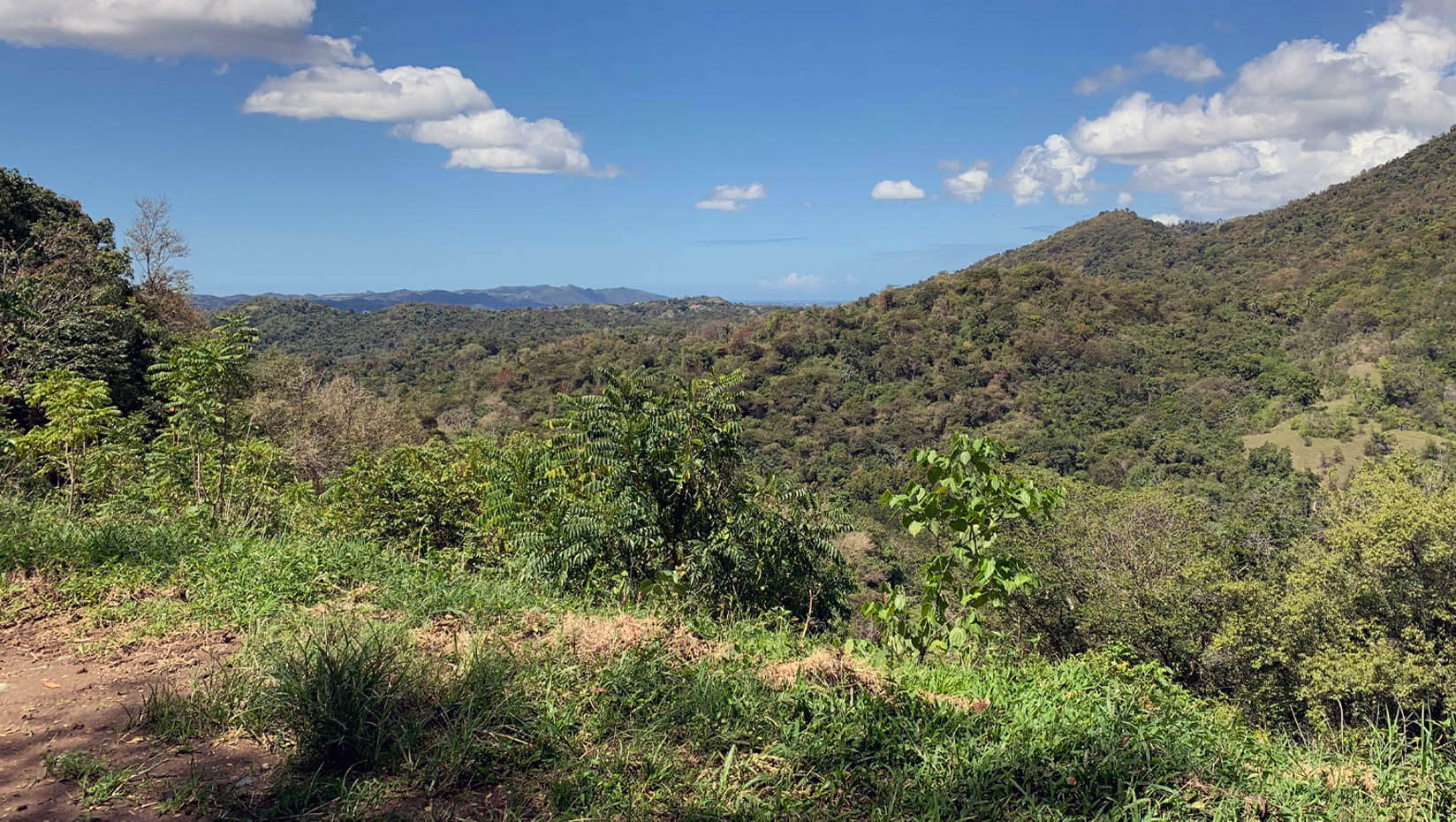
Olsen to study effects of mineral weathering on tropical forest productivity
Tropical forests can mitigate climate change by absorbing carbon dioxide from the atmosphere and turning it into plant biomass through photosynthesis. But as carbon dioxide levels continue to rise, some forests may not be able to sequester more of it because their habitats lack sufficient supplies of nutrients.
Amanda Olsen, a University of Maine associate professor of Earth science, says one way plants receive nutrients is through weathering, a process in which bedrock breaks down due to physical, chemical and biological forces and releases nutrients to soils. Determining if weathering releases minerals from bedrock fast enough to support tropical forest productivity, particularly in nutrient-poor areas, is the focus of her latest study in collaboration with Bill McDowell, a professor of natural resources and the environment with the University of New Hampshire.
The National Science Foundation awarded more than $311,000 for the project, which will examine chemical weathering — the process by which rocks break down and become soils — in forested areas in southwestern Puerto Rico. Their vegetation grows on serpentinite bedrock, which is known for containing low concentrations of essential plant nutrients such as calcium, potassium, nitrogen and phosphorus.
For their study, Olsen, the lead researcher, and McDowell will travel to tropical forests in the Rio Cupeyes and Rio Guilarte watersheds that have been designated NSF National Ecological Observatory Network (NEON) sites. Part of their research will involve determining the effects of increasing temperature and rainfall on chemical weathering and nutrient acquisition by plants.
The two scientists plan to measure the chemistry of bedrock, soils, stream and soil water, leaves, leaf litter and atmospheric deposition at three locations in the Rio Cupeyes watershed and one in the one Rio Guilarte watershed. The Rio Cupeyes testing locations are at different elevations, meaning they will have varying temperature and precipitation levels. This will provide a natural laboratory for testing the effects of changing climate on weathering. The Rio Guilarte site will serve as a control for the study, allowing researchers to also test the effect of Rio Cupeyes’ unusual bedrock on plant chemistry.
Using the samples they collect and existing data from NEON, Olsen and McDowell will quantify the chemical weathering rates at all four testing sites. They will then model aboveground biomass at each site using remote sensing imagery, which will allow them to assess the effects of mineral weathering on forest productivity, as well as the influence of temperature and precipitation on the process.
“Climate models assume that a certain percentage of carbon dioxide will be taken in by plants as carbon dioxide levels in the atmosphere continue to rise,” Olsen says. “However, if other nutrients limit ecosystems’ abilities to grow more or larger plants, the ability of plants to reduce the amount of carbon dioxide in the atmosphere will be less than we are currently predicting. This is why understanding whether rocks can provide some of those nutrients is key to understanding how much carbon dioxide tropical forests can take up in the future.”
Tropical forests hold almost half of the world’s terrestrial carbon dioxide, despite only covering 13% of its ice-free land mass. An escalation in atmospheric carbon dioxide over the years has increased photosynthesis in plants, resulting in more biomass, but only when those plants obtain enough nutrients.
Atmospheric deposition, in which gases and particles move from the atmosphere to the Earth’s surface either through precipitation or as dust, can supply some nutrients, but not all the necessary ones for plants in certain areas. Therefore, some tropical forest vegetation relies on chemical weathering for nutrient acquisition, but it is unclear whether chemical weathering can supply nutrients fast enough to keep up with demand over short timescales.
Olsen’s and McDowell’s study will help determine how important the process is for forest productivity, particularly as carbon dioxide levels continue rising and the planet becomes warmer.
The project builds on Olsen’s almost 20 years of expertise in mineral reactivity. McDowell brings extensive knowledge of the ecology and geomorphology of the Rio Cupeyes watershed to the project, due in part to his participation in its selection as a NEON site, she says.
They will use technology from UMaine’s Climate Change Institute and UNH’s Water Quality Analysis Laboratory, which McDowell directs, for the study.
“Collaborations between ecologists and Earth scientists are crucial to understanding the complicated interactions between rocks, soils, plants, and water in ecosystems, and this becomes even more important as we try to sort out how a changing climate affects these systems,” Olsen says.
Contact: Marcus Wolf, 207.581.3721; marcus.wolf@maine.edu

